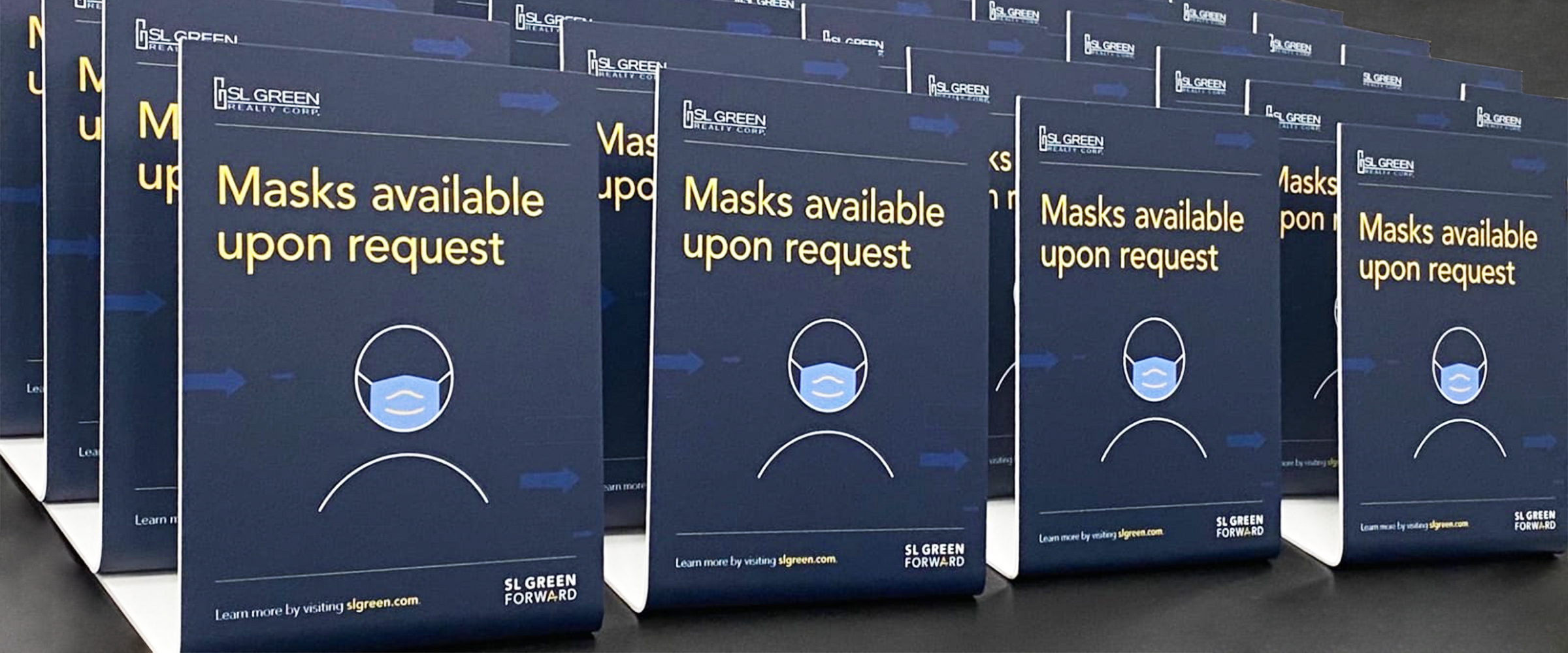Manhattan’s largest office landlord, SL Green, brought OTTO Brand Lab in on a project to help it develop a strategy for reopening its buildings after the COVID-19 outbreak. COVID-19 has dramatically changed the way commercial real estate companies manage and operate their buildings, which led to SL Green being forced to make strategic changes quickly to its buildings.
David Kohler, OTTO Brand Lab’s Principal, and Saleena Aggarwal, one of OTTO’s brilliant designers, talk about their experience working on the SL Green Forward project. David and Saleena go in-depth about helping SL Green analyze its needs while creating a plan and strategy for reopening all of SL Green’s buildings after the lockdown. Read more below to learn about the challenges caused by COVID-19 and the triumph of the project during a time of uncertainty.
OTTO Brand Lab: How did you address SL Green’s challenges brought on by COVID-19 and the lockdown?
David Kohler: Andy Simons from our team went out and did a study of SL Green’s buildings to determine what the best strategy was going forward. We did a study on the traffic flow of people so that foot traffic could be managed throughout the buildings. We determined how people should flow through the space and how that should be managed. Andy did the study and came back with a report for the company.
We made recommendations on where we would need certain key elements in areas such as the building lobbies. The first thing you have to decide is what are the decision points with any kind of people movement like this. Where are they going to be coming into the building? How do we manage them through that whole experience? There are multiple types of foot traffic: employees, visitors, delivery and support people. You really have to manage visitors. Get them through security and to the floor they need to be on. For employees, you want them to understand the different processes that they will be going through. You want to make sure they feel comfortable and secure. You want to reassure them, because these are scary times.
OTTO Brand Lab: What was the solution to addressing SL Green’s needs on the project?
David Kohler: We came in, did a study and put together a strategy for the SL Green Forward project. From there, we had to create all of the materials to support the strategy to help enable them to reopen, and then we had to brand it so people knew and recognized the company when they saw these materials from the SL Green Forward program. We created a brand around the program and then, from there, created all of the materials for both communication and informing them by creating a whole signage system.
OTTO Brand Lab: How did you establish the brand identity for the SL Green Forward project?
Saleena Aggarwal: We started off with a logo and brand colors and really thought about how this branding for the program works with the current branding of the company, but at the same time, it’s different enough and sophisticated enough for their buildings to be branded with this new identity. We really had to communicate through signage and directional pattern of the brand imagery. We used arrows a lot and experimented with them during our logo process. Once the client approved the logo, we started to create a pattern out of the arrows and that really became the language; very directional and very clear. Then we developed more assets that would communicate things very easily, like icons to indicate in certain areas of the building where you have to wear a mask, icons to show how to use the hand sanitizer, and proper ways to wash your hands. This was all to really help explain to people how to take the best measures so that everyone stays healthy inside the buildings.
David Kohler: With the audience that we’re speaking to, you’re dealing with people where English is a second language, particularly cleaning staff and other members of the support team. We really had to communicate visually as well as verbally. In these types of situations, you want people to understand something pretty quickly.
OTTO Brand Lab: What were the challenges you faced on the project?
Saleena Aggarwal: We really had to do a lot of trial and error with making signage from scratch for these really complex buildings that have really complicated pathways. No two buildings are the same. We had to figure out what’s working and what’s not. We even sent in the DCC team to install some of the printed materials early on in the process to see how well it works in the environment.
David Kohler: Nobody had ever done this before, certainly not in my lifetime or since the Spanish Flu. There’s no predetermined methodology. We have to go in with what we know will work based on all of our experience. The rules were changing, the timing, the laws. Everything was changing. We were all learning together. We were learning from the governor’s office on down to what the plans were and what was going to need to happen and by when. That was the biggest challenge. It was constantly in a state of flux. We had to keep adapting based on laws and rules changing and being written while we were doing this. The rules for the opening were being written until a week before opening.
Andy, who runs our environmental branding group, has done a lot of work specifically for hospitals and many other organizations like that, so it was also utilizing a lot of that experience to guide us. We really had to fall back on our experience working with museums, as well as Andy’s experience in emergency situations guiding mass groups of people in public areas.
Real estate has been hit very hard by the virus. It’s changed the way people work and the way they interact. It’s quite substantial. You have another issue where you have the building itself that is owned by SL Green, but the tenants also have rights in their spaces, and they have to manage their spaces. They’re independent in that sense, so you have to guide them but also work within their systems.
DCC went in and did the test fit for us, and we learned quite a bit from that. Once we went out there and saw it, a lot changed. SL Green has very tasteful high-end buildings, so you can’t treat them the same way you treat a hospital. You don’t want to turn their work environment into an emergency room. You have to find that middle road by informing people, while making them comfortable, and doing it in a tasteful way that fits with the buildings.
Interested in reading more about the impact COVID-19 has had on brands? Read our blog post, A Campaign to Help the Homeless During the Pandemic. Don’t forget to subscribe below to stay up date on all of the happenings at OTTO Brand Lab.

